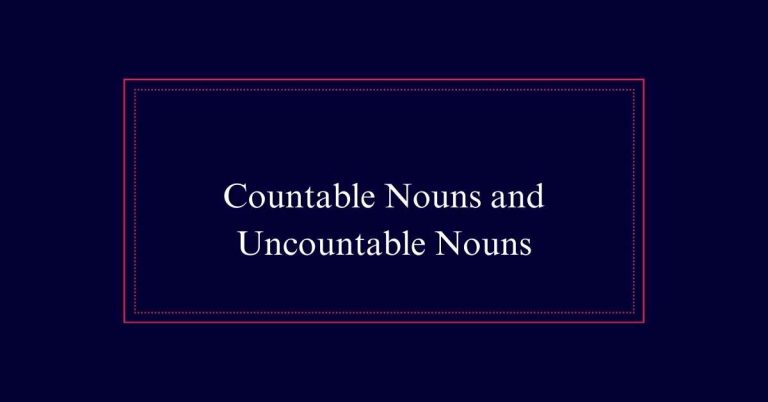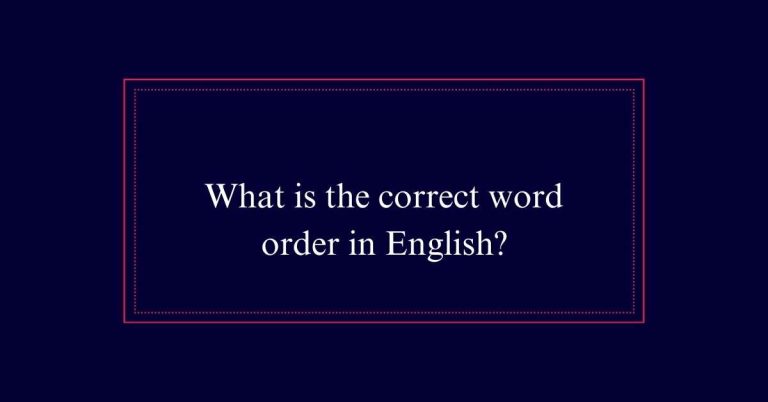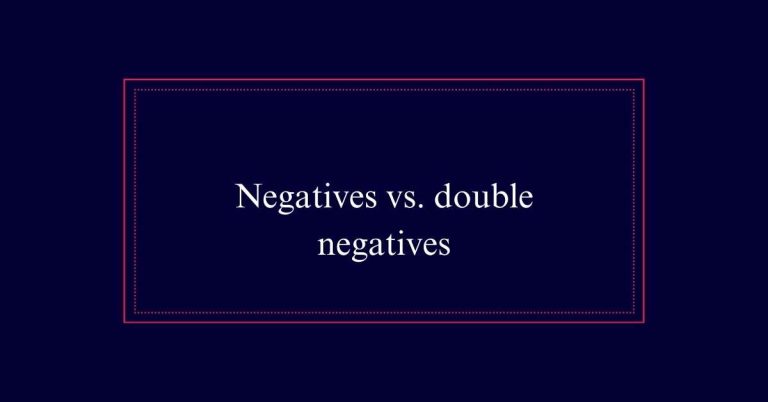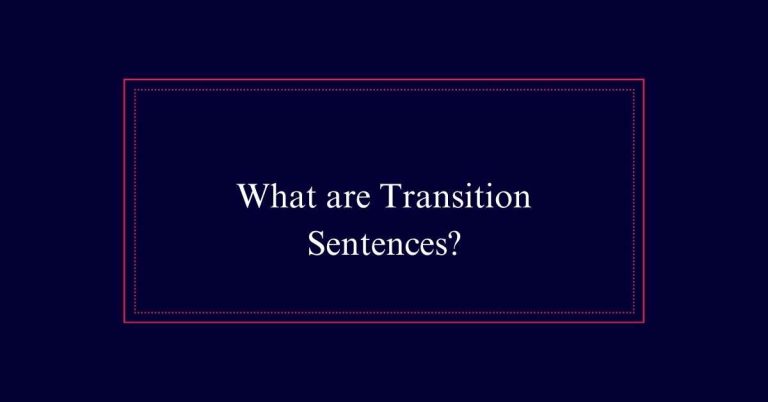How to Use Conjunctive Adverbs?
Conjunctive adverbs link ideas between independent clauses to enhance clarity and flow. Common examples include ‘however,’ ‘thus,’ and ‘moreover.’ To use them correctly, place a semicolon before the conjunctive adverb and a comma after it, such as, ‘The project is overdue; thus, we need to expedite our efforts.’
Definition of Conjunctive Adverbs
A conjunctive adverb is a word used to connect ideas in different independent clauses or sentences. It describes the relationship between these clauses, helping to show how one idea follows another.
Unlike coordinating conjunctions, conjunctive adverbs do not link clauses grammatically. Instead, they facilitate smoother communication by indicating relationships such as contrast, cause and effect, or sequence. Examples include words like ‘however,’ ‘therefore,’ and ‘meanwhile.’
These words typically follow a semicolon and precede a comma. For instance, “I wanted to go for a walk; however, it started to rain.” This structure helps clarify the connection between separate ideas, making the text more coherent and easier to understand.
Role in Connecting Ideas
Understanding the role of conjunctive adverbs in connecting ideas is fundamental to grasping their importance in writing. These adverbs not only link independent clauses but also clarify the relationship between them. They guide the reader through the text, making the flow of ideas seamless and logical.
For instance, conjunctive adverbs can show cause and effect, contrast, or sequence.
- Clarity: They help clarify the relationship between ideas.
- Smoothness: They maintain smooth connections between sentences or clauses.
- Emphasis: They can highlight the importance or contrast of information.
Differences From Coordinating Conjunctions
Distinguishing conjunctive adverbs from coordinating conjunctions is essential for understanding their distinct roles in sentence structure.
Conjunctive adverbs, such as ‘however’ and ‘therefore,’ connect ideas between independent clauses but do not grammatically link them. Instead, they clarify relationships like contrast or cause-and-effect. They often require punctuation, like a semicolon or period before them and a comma after.
In contrast, coordinating conjunctions, such as ‘and,’ ‘but,’ and ‘or,’ directly link independent clauses grammatically. They create compound sentences without needing additional punctuation. For example, ‘I wanted to go, but I stayed home.’

Usage in Independent Clauses
Employing conjunctive adverbs in independent clauses enhances the clarity and flow of written communication. These adverbs act as bridges, linking two independent thoughts seamlessly.
To use them correctly, place a semicolon before the conjunctive adverb and a comma after it. This helps in maintaining the grammatical integrity of the sentences.
For example:
- ‘I wanted to join the meeting; hence, I was caught in traffic.’
- ‘The team worked hard; as a result, they achieved their goal.’
Here are some key points to remember:
- Punctuation: Use a semicolon before and a comma after the conjunctive adverb.
- Clarity: They help clarify the relationship between two independent clauses.
- Flow: They enhance the logical flow of ideas in your writing.
Common Conjunctive Adverbs
To further enhance the clarity and flow of your writing, it is important to recognize some common conjunctive adverbs. These words help to link independent clauses and improve the coherence of your text.
Some frequently used conjunctive adverbs include ‘however,’ ‘therefore,’ ‘moreover,’ ‘consequently,’ and ‘nevertheless.‘ Each of these words serves a specific purpose. For example, ‘however’ introduces a contrast, while ‘therefore’ indicates a result. ‘Moreover’ adds additional information, and ‘consequently’ shows a cause-and-effect relationship. ‘Nevertheless’ highlights a contrast or contradiction.
Punctuation Guidelines
Correct punctuation is crucial when using conjunctive adverbs to guarantee clarity and coherence in your writing. Conjunctive adverbs often appear between two independent clauses.
When using them, place a semicolon before the adverb and a comma after it. This helps to link the ideas smoothly without causing confusion.
Here are some key points to remember:
- Semicolon and comma: Use a semicolon before the conjunctive adverb and a comma after it.
- Standalone adverbs: When starting a sentence with a conjunctive adverb, follow it with a comma.
- Mid-sentence usage: If a conjunctive adverb appears in the middle of a sentence, enclose it with commas.
Showing Contradictions
Conjunctive adverbs are essential tools for highlighting contradictions between independent clauses. They help indicate a change in direction or an unexpected outcome. For example, in the sentence “I wanted to go for a run; however, it started to rain,” the word “however” highlights the contradiction.
Here is a table illustrating some common conjunctive adverbs used to show contradictions:
| Conjunctive Adverb | Example Sentence |
|---|---|
| However | I studied hard; however, I didn’t pass the exam. |
| Nevertheless | It was raining; nevertheless, they went for a walk. |
| On the other hand | He loves soccer; on the other hand, he dislikes tennis. |
| Still | She was tired; still, she finished her work. |
| Yet | He is wealthy; yet, he lives modestly. |
Clarifying Relationships
While showing contradictions is important, conjunctive adverbs can also clarify relationships between independent clauses. They help readers understand how one idea follows from another, making communication clearer.
For example, conjunctive adverbs can show cause and effect, sequence, or addition.
Using conjunctive adverbs effectively can:
- Show cause and effect:
‘I was tired; as a result, I went to bed early.’
- Indicate sequence:
‘First, we will review the budget; next, we will discuss the project timeline.’
- Add information:
‘He is an excellent speaker; in addition, he has extensive experience in the field.’
Conjunctive Adverbs Vs. Subordinating Conjunctions
Many people find it challenging to distinguish between conjunctive adverbs and subordinating conjunctions. Conjunctive adverbs, such as ‘however’ and ‘therefore,’ connect independent clauses. They show relationships like contrast or cause and effect. They often require a semicolon before them and a comma after.
Subordinating conjunctions, like ‘because’ and ‘while,’ connect a dependent clause to an independent clause. They introduce the dependent clause and indicate time, reason, condition, or contrast. Unlike conjunctive adverbs, subordinating conjunctions do not need special punctuation.
Practical Examples
For better understanding, let’s explore some practical examples of conjunctive adverbs in action. Conjunctive adverbs help link ideas smoothly between independent clauses.
Consider these sentences:
- Example 1: ‘She was very tired; nevertheless, she finished her report on time.’ The word ‘nevertheless’ shows contrast.
- Example 2: ‘The weather was terrible; accordingly, the event was postponed.’ Here, ‘accordingly’ indicates a cause-and-effect relationship.
- Example 3: ‘He didn’t study; thus, he didn’t pass the exam.’ ‘Thus’ explains the result of the first clause.






